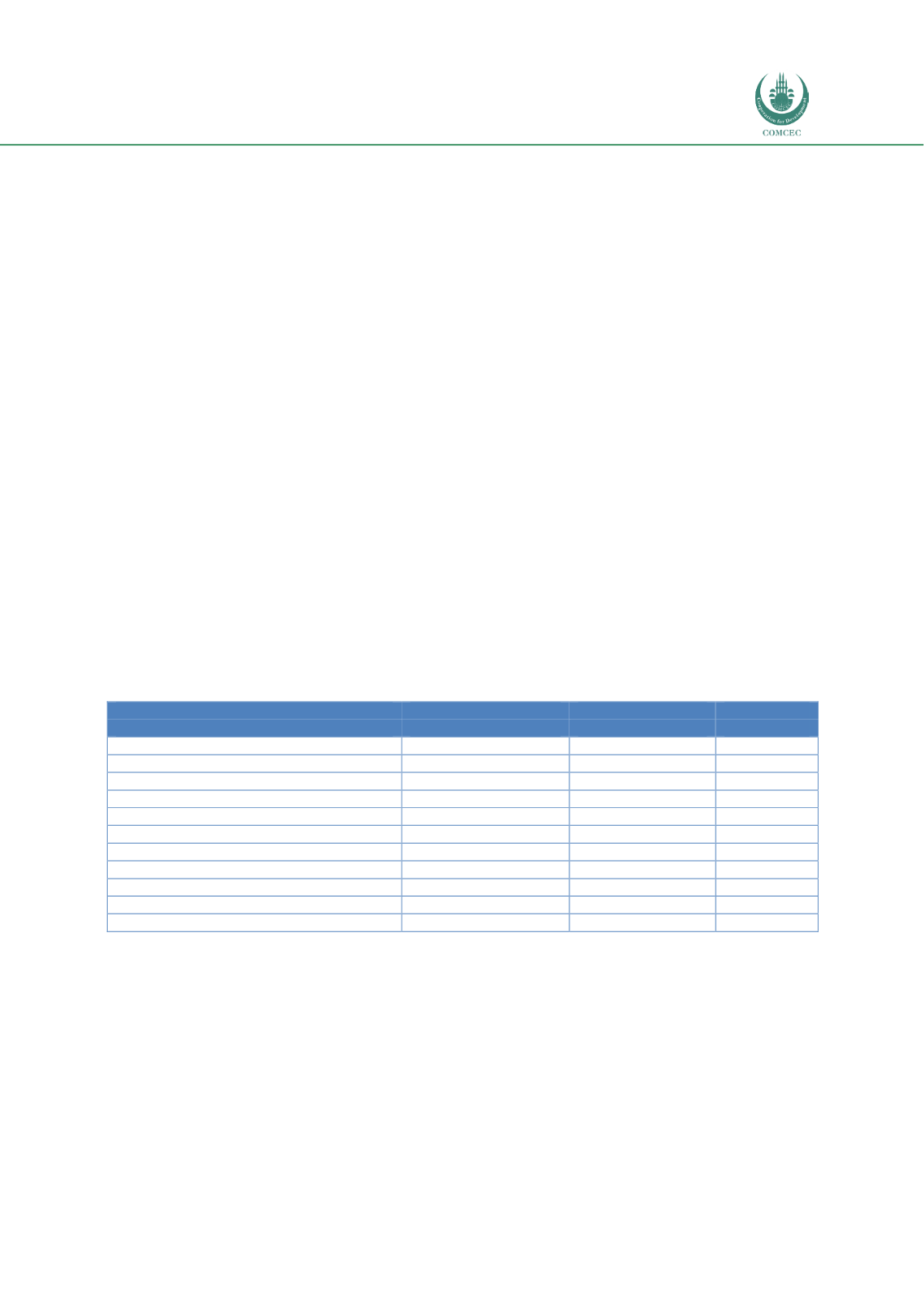

Infrastructure Financing through Islamic
Finance in the Islamic Countries
143
The insurance sector is the lowest with a total asset value of SDG 5.2 billion representing 2.3%
of the total financial sector value. Fifteen insurance companies operating under the
supervision of the Insurance Supervisory Authority (ISA) in the country comprise nine, general
non-life insurance companies, four composite (general and life) insurance companies, and two
reinsurance companies (BOK, 2016).
4.5.2.
Current Status and Projected Investments in Infrastructure Sectors
The World Bank (WB) in its global rankings 2018 ranked Sudan number 121 out of 160
countries based on the Logistics Performance Indicator 2018 (LPI). Based on the LPI criteria,
Sudan had a moderate rate of only 2.2 in infrastructure compared to Germany, which had the
highest rate in the world of 4.2 (TWB, 2018). Based on the index system and evaluation model
of the Chinese Economic Report Series 2014, Sudan ranks 92 out of 133 countries (Jianping et
al. 2014).
Sudan has invested in infrastructure during the last few decades. Power generation capacity
has tripled from 1,000 MW in 2005 to 4,000 MW in 2012. Sudan has the capacity to be a major
exporter of hydropower if additional facilities are improved and links to other Nile Basin
countries are established. Sudan has made progress in liberalizing the Information
Communication Technology (ICT) sector and has succeeded in attracting substantial amounts
of domestic and foreign private capital (AfDB, 2016). However, Sudan’s most pressing
infrastructure challenges remain in the water and transportation sectors as most of Sudan
suffers from insufficient access to clean sources of water and access to sanitation
(Ranganathan, Garmendia, 2011).
Table 4.5. 1: Development Expenditures for Proposed Infrastructure Programs 2014-2030
(In USD million at 2012 prices)
Program
Medium-term
Long-term
Total
2014-2020
2021-2030
Roads
3,346
5,985
9,330
Railways
1,945
1,698
3,643
Ports
410
611
1,020
Civil aviation
153
297
450
Transport Sub-total
5,853
8,590
14,444
Power
6,380
8,043
14,423
Water resource supply
600
1,400
2,000
Domestic water and sanitation
5,160
11,317
16,477
Irrigation
800
2,200
3,000
ICT
324
300
624
Total
19,117
31,851
50,967
Source: AfDB (2016: 169)
Table 4.5.1 shows the total investment needed for the achievement of the proposed program of
development for the infrastructure sectors in the medium term (2014-2020) and long-term
(2021- 2030). The total estimated funding requirements over the period is close to USD 51
billion. USD 14.4 billion of it is for transportation and the power sector needs USD 14.4 billion.
The water and sanitation services need USD 16.5 billion and water resource supplies and
irrigation development need USD 2.0 billion and USD3 billion respectively.
The average annual expenditure on infrastructure development is expected to be USD 2.7
billion per year for the 2014-2020 period, and USD 3.2 billion per year for the 2021-2030 long-
















